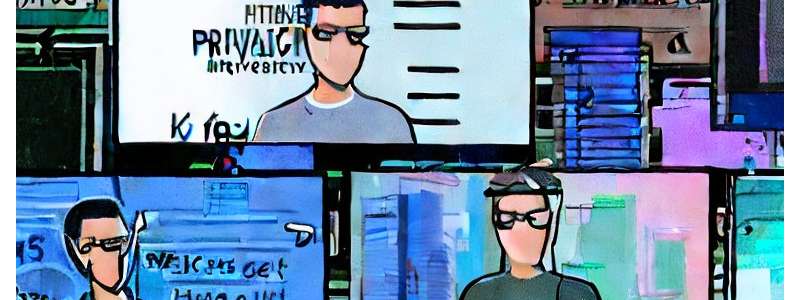augmented reality
Events

Informatik-Kolloquium, Thorsten Strufe, KIT
Thorsten Strufe from the KIT in Karlsruhe will give a talk on privacy in the Metaverse.
Extended realities (XR), including Augmented reality (AR) and virtual reality (VR), are emerging technologies with a wide range of potential applications, including networking, gaming, healthcare, and education. However, as with any new technology, AR/VR also introduces new security and privacy challenges. AR and VR devices collect a wide range of personal data about users, including their physical movements, eye movements, and voice recordings. This data can be used to track users' activities, identify them, or even infer private attributes like health conditions or private preferences. Furthermore, XR applications integrate multiple modalities, such as audio, video, and haptic data streams, enlarging security and privacy exposure. Yet, there are always claims of how "anonymization" and "pseudonymization" were helping to achieve "GDPR compliance". In this talk I will present results from three of our recent studies, and we will discuss how claimed protection has proven and is ineffective under scrutiny.
CV:
Thorsten Strufe is professor of IT Security at Karlsruhe Institute of Technology (KIT/KASTEL), and adjunct professor for Privacy and Network Security at TU Dresden. He is a deputy speaker of the Excellence Centre for Tactile Internet with Human-in-the-Loop (CeTI), and a PI in the national IT security competence center KASTEL Security Research Labs.
His research interests lie in the areas of privacy and network security, especially in the context of social networking services and novel mixed reality applications. Recently, he has focused on studying privacy implications of user behavior and possibilities to provide privacy-preserving and secure networked services.
Previous posts include faculty positions at TU Dresden, TU Darmstadt, and Uni Mannheim, as well as postdoc/researcher positions at EURECOM (France) and TU Ilmenau.
Institution
- Computer Networks UHH

Informatik-Kolloquium: Interactive, feature-based 3-D visualization for rapid exploration of gridded atmospheric data
Visualization is an important and ubiquitous tool in the daily work of atmospheric researchers and weather forecasters to analyse data from simulations and observations. In this talk, I will present recent and ongoing work we are conducting at the Universität Hamburg’s Visual Data Analysis Group with respect to interactive 3-D visualization and feature detection using gridded atmospheric data. This includes methods for detection and interactive visual analysis of 3-D atmospheric fronts, as well as interactive 3-D analysis of simulated clouds and other volumetric data. Our methods are integrated into “Met.3D”, our open-source research software that makes novel interactive, 3-D, feature-based, and ensemble visualization techniques accessible to the meteorological community (https://met3d.wavestoweather.de). Since its first public release in 2015, Met.3D has been advanced within the German research projects “Waves to Weather (W2W)” and “Climate, Climatic Change, and Society (CLICCS)” and has evolved into a feature-rich visual analysis tool facilitating rapid exploration of gridded atmospheric data.
Speaker: Dr. Marc Rautenhaus
Bio:
Marc Rautenhaus leads the Visual Data Analysis Group at the Regional Computing Centre of Universität Hamburg. His research interests lie at the intersection of visual computing and weather and climate research, focussing on interactive 3-D visualization, feature detection, weather forecasting, and research software development of the meteorological interactive 3-D ensemble visualization framework Met.3D. He holds a master’s degree in Atmospheric Science from the University of British Columbia, Canada, and a PhD in Computer Science from the Technical University of Munich. Previous posts include researcher/postdoc positions at the German Aerospace Centre (DLR) and the Technical University of Munich.
Institution
- Computer Networks UHH

Universität Hamburg
Adeline Scharfenberg

Universität Hamburg
Adeline Scharfenberg

Universität Hamburg
Adeline Scharfenberg